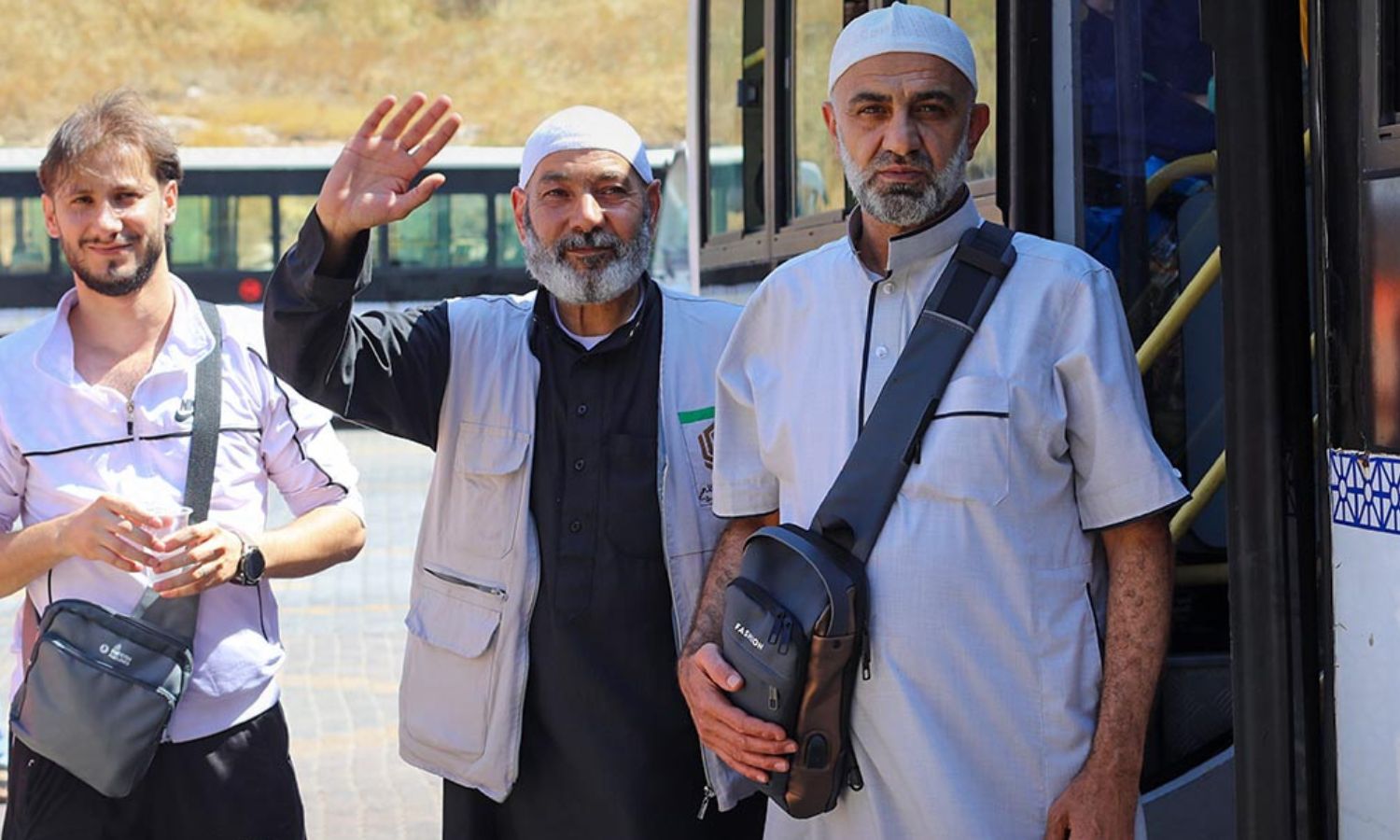



Enab Baladi – Idlib
To prepare for the arrival of his parents returning from performing the pilgrimage, Abdel Hamid Khattab (37) settled for painting his house and decorating it with a few decorations, pictures of the Kaaba, and some balloons.
The young man wished to decorate part of the neighborhood and put pine trees and green branches on the outer door of the house, but displacement and high prices prevented him. He is displaced from Damascus and resides in Idlib, northwestern Syria.
Khattab described the decorations as “modest” and said they cost him more than 800 Turkish liras ($25 USD). The complete decorations he wished for would cost around 5000 Turkish liras ($150 USD). He also mentioned certain rituals he economized on, like hospitality, and others he gave up on entirely, like the traditional Arada Shamia reception.
Residents in Idlib’s markets primarily use the Turkish lira alongside the dollar, with each dollar equivalent to 33 Turkish liras.
Khattab missed the usual rituals for welcoming pilgrims this July. He told Enab Baladi that his family lives in a rented house and could be evicted at any time, so it wasn’t possible to decorate with murals. He settled for hanging some pictures of the Kaaba inside the house, which can be removed at any time.
He pointed out that financial costs played a role in this, as his father had sold a property he owned on the outskirts of Damascus to cover the pilgrimage expenses.
Decorating homes with certain phrases, some murals, and decorating neighborhoods are traditions Syrians maintain for welcoming pilgrims. However, the deteriorating living conditions have led to the absence of some of these rituals, while others try to keep some traditions to express joy at the pilgrims’ safe return.
Meanwhile, Mazen al-Hamad (33) settled for welcoming his father, who returned from pilgrimage, with the traditional Arada reception organized by his friends upon his father’s arrival at the Bab al-Hawa border crossing with Turkey. He did not decorate the house.
Pilgrims’ families used to present guests with gifts such as prayer beads, miswak sticks, prayer mats, and pieces of “raha” and dates, but the high costs of these gifts have driven some to economize on them.
The prices of plastic or polyester commercial prayer beads are 40 Turkish liras, increasing depending on the material and craftsmanship. Miswak sticks start at 20 liras.
The price of a kilogram of medium-quality dates is 50 Turkish liras, while Saudi dates cost 90 liras. Premium types start at 150 liras per kilogram and go up to 450 liras.
As for “raha,” which is presented to welcome pilgrims, its price starts at 430 Turkish liras per kilogram, increasing depending on quality, with individual pieces costing more than 15 liras.
After a simple calculation, Khattab told Enab Baladi that the cost of hospitality gifts for welcoming guests exceeds 6500 Turkish liras ($200 USD). He settled for offering a miswak stick and some dates, along with Zamzam water for visitors.
Mazen al-Hamad settled for giving out miswak sticks to guests, replacing the traditional prayer beads with a lower-priced electronic counter costing 10 Turkish liras each. Concerning hospitality, he offered a modest type of “raha” and dates alongside Zamzam water.
Joyful rituals for welcoming pilgrims are traditions linked to Syrian heritage, which they try to preserve. However, reviving them has become dependent on financial capability, and some traditions face criticism given the dire living conditions.
Abdullah al-Issa (60) from Idlib, who hopes to perform the pilgrimage next year, told Enab Baladi that the rituals are not the same as before, as the costs are very burdensome. People now visit pilgrims to congratulate them and ask about the pilgrimage rituals, and no one expects elaborate hospitality and gifts anymore.
Over the past two weeks, batches of Syrian pilgrims have started returning to Syria, either through border crossings with Turkey or to areas under the control of the Syrian regime, which for the first time in 12 years, organized pilgrimage trips from its controlled areas.
On June 12, the Syrian Committee for Hajj and Umrah announced the completion of the arrival of all Syrian pilgrims through its offices to the sacred sites for the 2024 pilgrimage season. The number of pilgrims arriving through their offices in northern Syria, Turkey, Qatar, and Erbil reached 5,216 pilgrims.
The Syrian Committee for Hajj and Umrah, which is part of the opposition institutions, organized this year’s pilgrimage groups from northern Syria, Turkey, Erbil, and Qatar, with a quota ranging between 5,000 and 5,500 pilgrims.
Meanwhile, for the first time in 12 years, the Syrian regime organized pilgrimage trips from its controlled areas after determining its Ministry of Religious Endowments’ quota of 17,500 pilgrims, selected from more than 50,000 applications.
if you think the article contain wrong information or you have additional details Send Correction